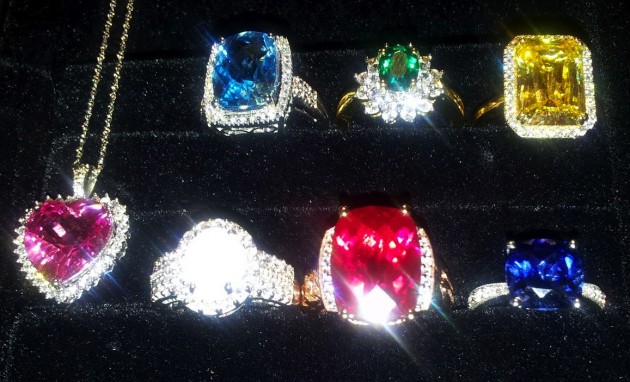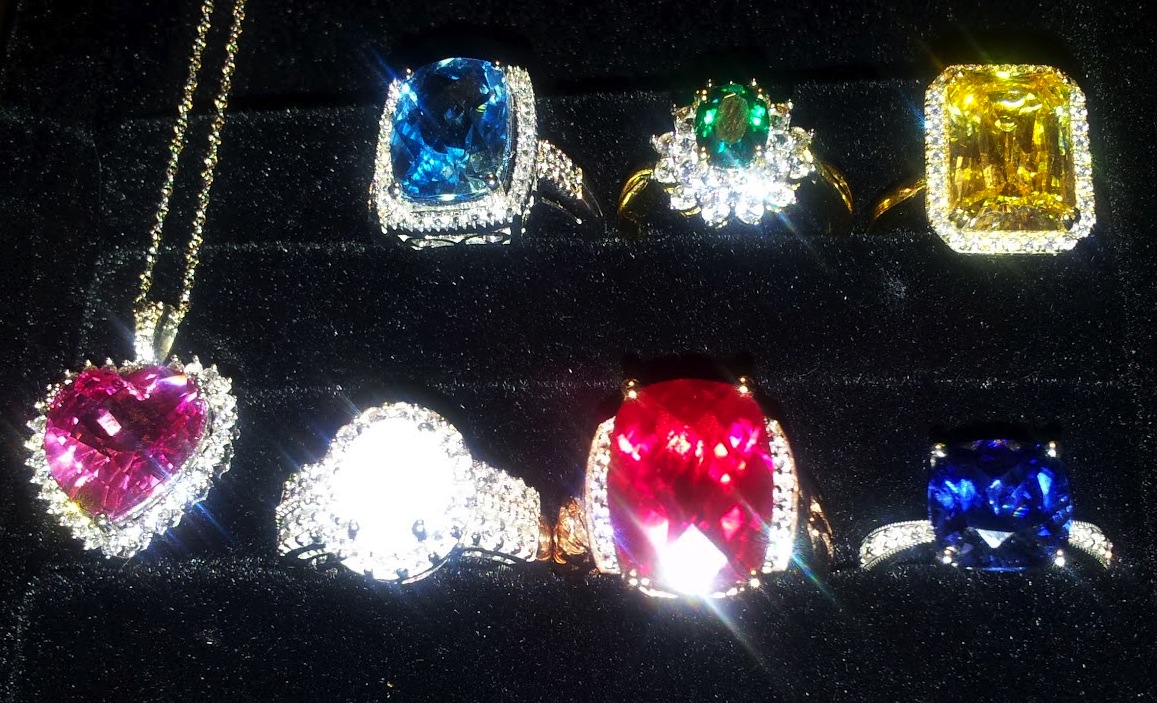I’ve spent a big part of today doing investment research on synthetic gemstones vs natural gemstones. Following the recent reading foray into the world of jewelry retailing, distributing, and mining, I kept coming across a company called Chatham. They had reportedly perfected the art of manufacturing gemstones such as rubies and sapphires inside of a laboratory. The gems they create are called “synthetic” because they chemically identical to the gems found in the Earth – literally, the exact same product with the exact same “physical, chemical, and optimal” properties – only made by scientists in a high tech facility.
Interestingly, they are often more beautiful with more sparkle than traditional gemstones because they don’t contain the impurities that are a by-product of gem formation within the Earth itself. Synthetic gemstones are able to be identified and differentiated from mined gemstones because they are too perfect. You read that right: The quality is too high.
[mainbodyad]By all industry accounts, synthetic gemstone production is just now coming into its full fruition. Back in the 1990’s and earlier, the only economically feasible alternatives to fine jewelry were “simulated” gemstones, which were colored glass or other materials (think Cubic Zirconia) meant to look like the real thing. You also occasionally encountered quality control issues when mined rubies were filled with glass. Now, however, a synthetic sapphire is almost certainly to be of higher quality than a mined sapphire. The same goes for emeralds and rubies.
Put bluntly: As of now, in 2012, someone who buys a mined gemstone is paying 10, 20, 50, or 100x the price for an inferior product.
Upon discovering this, I found it incredible that there is still a pricing differential between mined gemstones and manufactured synthetic gemstones. Despite the latter being vastly superior in appearance due to the lack of impurities, they often sell for pennies on the dollar compared to the former! It is totally, completely, and incomprehensibly irrational. You buy a Mercedes or Bentley because it is better than a Ford or Honda. You buy a Steinway & Sons grand piano because it is better than a Kawai. You buy a Brioni suit because it is better than a no-name private label brand at a discount retailer. You buy an expensive watch because it is well constructed and made of the finest materials compared to a $10 bargain bin timepiece. Yet, here, you have people paying more for a product that is of lesser quality. This is stupid. Plain and simple, it is stupid.
To satiate my curiosity, and near disbelief this could be happening in the market, I did some research and found a local department store that sold quality synthetic gemstones. Twenty minutes ago, I ran out and purchased several, including a ruby, blue sapphire, white sapphire, pink sapphire, and emerald, as well as several other pieces. I bought them and brought them back to my office to study them. Here are is a quick cell phone picture (not the best, I know, but it will suffice):

Synthetic gemstones are chemically identical to mined gemstones and often more beautiful due to the lack of impurities. Despite this, they sell for pennies on the dollar. I don’t think that is sustainable in the long-term.
Had these synthetic gemstones been mined from the Earth, they would have easily cost well over $100,000. Instead, I was able to buy them for $696. That includes sales tax and is full retail with no discount. They are the exact same product other than they are set in sterling silver and 14k gold instead of platinum or 18k gold. There is no chemical or molecular difference between the ones mined from the planet and the ones made by scientists on the surface of the planet. None.
Are Synthetic Gemstones Going to Do To Mined Gemstones What Synthetic Pearls Did To Harvested Pearls?
My first thought upon realizing this was to remember a story from the 19th century Gilded Age in the United States. One of the barron robbers gave a family member a strand of pearls that would have cost $1,000,000 in today’s wealth. Shortly thereafter, the process of making pearls in farms by seeding oysters was perfected and those same pearls became, for all intents and purposes, nearly worthless. It was a near total loss of purchasing power. I cannot see any situation in which the same thing doesn’t happen for gemstones over the coming decades. Perhaps, diamonds, as well, now that synthetic diamonds are becoming cheaper and cheaper to produce.
What are my conclusions?
- Gemstones as a store of value or show of wealth have seen their day. In the future, they may become common. As one source put it, aluminum was once more expensive than platinum until we figured out how to manufacture it. Only exceptional gemstones will hold any value, and even those probably won’t make up their inflation-adjusted maintenance expense such as insurance and storage.
- I am not sure what the future profitability of high end jewelry retailers who rely on gemstones as major price points will look like decades hence. Human psychology being what it is, people will always want ways to display their wealth and differentiate themselves. I think high-end watches have largely filled this role. There may be a lot of growth in that market if it becomes a replacement.
- Technology really does pose a threat to nearly every business, even the oldest ones. You cannot rest if you are running a business. You always need to be ahead of the market.
I’m about to close the book on this chapter and move on to another industry. I’ve been thinking about real estate lately so perhaps I will begin to look into som eof the more interesting legal structures or tax liens certificates.
Footnote: I hate the term “natural gemstones” because even synthetic gemstones are “natural” because they occur “in nature” given that humans are part of nature. It is a linguistic fallacy but those are the terms people use when discussing the topic.
[mainbodyad]



